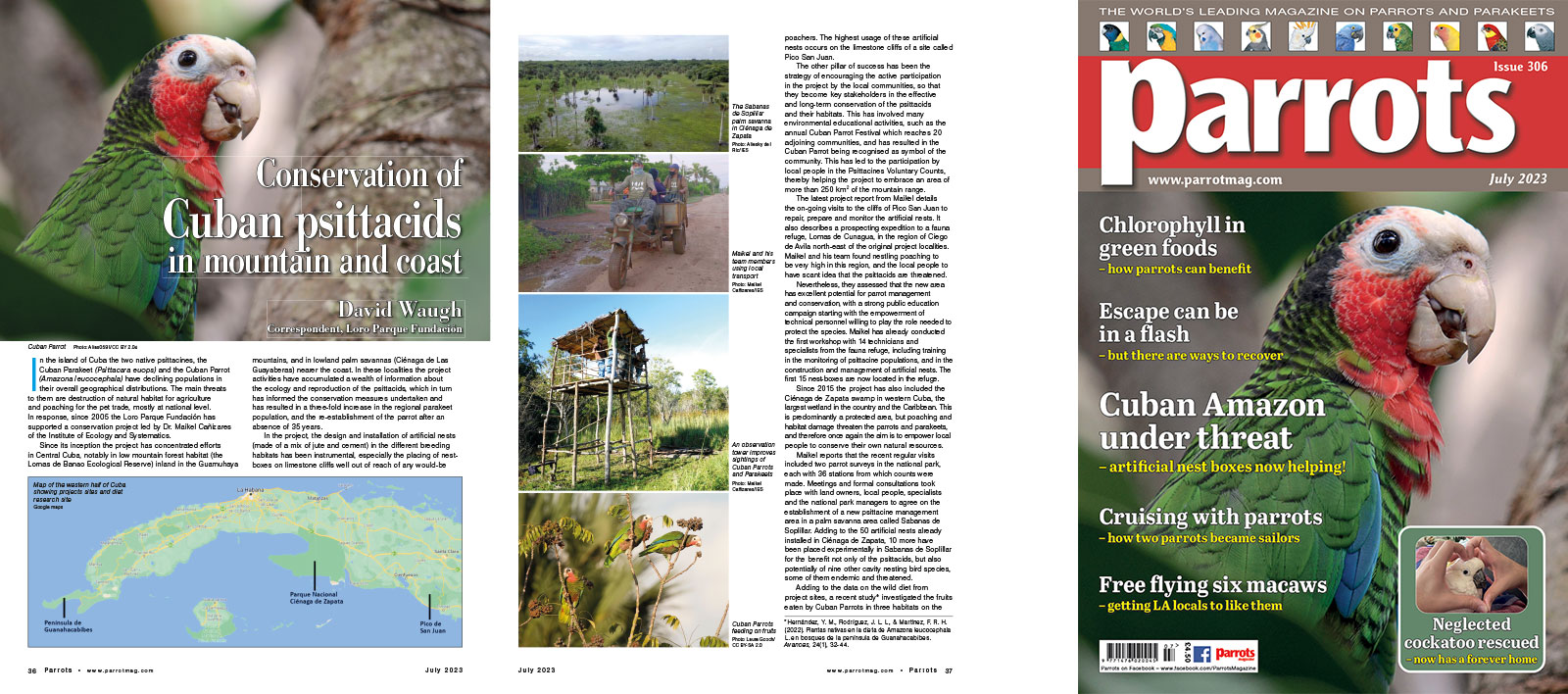
David Waugh, Correspondent, Loro Parque Fundación
In the island of Cuba the two native psittacines, the Cuban Parakeet (Psittacara euops) and the Cuban Parrot (Amazona leucocephala) have declining populations in their overall geographical distributions. The main threats to them are destruction of natural habitat for agriculture and poaching for the pet trade, mostly at national level. In response, since 2005 the Loro Parque Fundación has supported a conservation project led by Dr. Maikel Cañizares of the Institute of Ecology and Systematics.
Since its inception the project has concentrated efforts in Central Cuba, notably in low mountain forest habitat (the Lomas de Banao Ecological Reserve) inland in the Guamuhaya mountains, and in lowland palm savannas (Ciénaga de Las Guayaberas) nearer the coast. In these localities the project activities have accumulated a wealth of information about the ecology and reproduction of the psittacids, which in turn has informed the conservation measures undertaken and has resulted in a three-fold increase in the regional parakeet population, and the re-establishment of the parrot after an absence of 35 years.
In the project, the design and installation of artificial nests (made of a mix of jute and cement) in the different breeding habitats has been instrumental, especially the placing of nest-boxes on limestone cliffs well out of reach of any would-be poachers. The highest usage of these artificial nests occurs on the limestone cliffs of a site called Pico San Juan.








Parrot Chat
Buyers Guides
Breeding articles